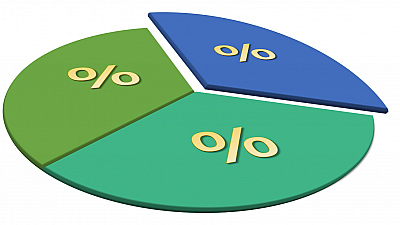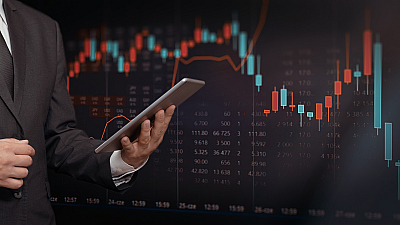ETFs are a basket of assets pooled together into one fund, that you can trade without having to buy all the components individually.
These are funds that can be traded on an exchange, just like a stock (hence the name), and their price changes throughout the day. It all starts with a fund provider who owns the underlying assets. He designs a fund to tracks their performance and then sells shares of that fund to investors.
Shareholders own a portion of the ETF, but they don’t own the underlying assets in the fund.
Nevertheless, if the ETF tracks a stock index, for example, investors receive dividend payments for the stocks that make up that index.
ETFs are not limited to the stock markets, of course. They can also invest in currencies, options, bonds, commodities or a mixture of assets.
ETFs have unique ticker symbols so that their price activity can be tracked.
Some fund providers have put their sense of humor in those tickers. The SPY is one of the ETFs that track the S&P 500, HACK is a cyber-security fund, GAMR is a Game Tech ETF and FONE is focused on smartphones.
TYPES OF ETF
ETFs come in a variety of shapes and sizes. An ETF can own hundreds of stocks across various industries, or it could be focused on one particular industry or sector.
Exchange traded funds can be managed passively.
This means the manager does not need to decide neither what securities to buy for the ETF, nor the weight of each security in it. This is pre-determined by the index that the ETF would track.
ETFs can also be managed actively.
This means that it’s the manager who chooses what securities would be included in the basket of the ETF.
Other criteria divide the ETFs into the following groups:
⇒ Index ETFs - they track the price moves of a stock index. The most popular are SPDR S&P 500 ETF Trust (SPY), Vanguard Total Stock Market ETF (VTI), Invesco QQQ Trust (QQQ).
⇒ Industry ETFs - they cover stocks from one industry, for example technology, consumer staples, pharmaceutical, financials, energy, agriculture, etc.
⇒ Commodity ETFs - track the prices of various commodities. They can be used to trade crude oil or wheat, as an alternative to the commodities futures or CFDs.
⇒ Bond ETFs - track the prices of various bonds issued by governments, corporations, state and local authorities.
⇒ Currency ETFs - track the performance of some currency pairs.
⇒ Inverse ETFs - a very interesting type of ETFs. Instead of shorting stocks with all the associated requirements, you can just buy an inverse ETF.
⇒ Volatility ETFs - track volatility indices such as VIX (CBOE Volatility Index). Some of the most popular VIX ETFs are iPath S&P 500 Dynamic VIX ETN (XVZ) and ProShares VIX Short- Term and Mid-Term Futures ETF (VIXY and VIXM).
ADVANTAGES AND DISADVANTAGES
Buyers should be aware that exchange traded products differ from one to another quite drastically. They need to be studied well, before diving in their pools. But once mastered, they reveal excellent opportunities.
ETFs provide diversification to the trader’s portfolio.
Some of them have hundreds of components, which would require quite a lot of time and money to obtain piece by piece. By buying the ETF it delivers the benefits of them all in just a single click.
Diversification also means risk management.
ETFs can be used to spread risk as instead of buying shares in just one company, the ETF grants a little piece of a bunch of companies.
ETF pricing is as transparent as it gets.
Anyone can check the price activity for an ETF on an exchange. In addition, ETFs report their underlying securities daily, which means investors always know what they are holding.
ETFs offer lower costs and fewer broker commissions than those when buying the stocks individually, as investors only need one transaction to buy and one transaction to sell. Brokers usually charge a commission for each trade. Some low-cost ETFs are even not charged, and this reduces the costs even further.
Commissions on the actively managed ETFs can be higher, though. This is because managers put in time and effort in buying and selling shares of companies and changing the holdings within the fund. Fees can also vary widely from fund to fund, depending on the issuer.
ETFs have a wide range of liquidity.
The most popular ETFs are constantly traded, with tens of millions of shares per day being bought and sold but it can be quite problematic to sell if the ETF is not as frequently traded.
Some ETFs never really make it and need to close. This could happen when an ETF does not bring in enough assets to even cover its administrative costs. Investors, in this case, need to sell as soon as possible and often at a loss.
ETFs provide great possibilities and advantages when you use them right.
The level of diversification that an ETF offers is hardly reachable otherwise. As with all financial derivatives, there should be some caution when choosing what to trade.




